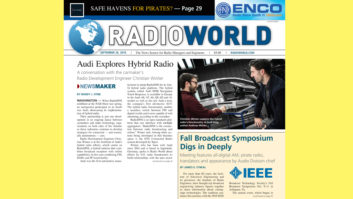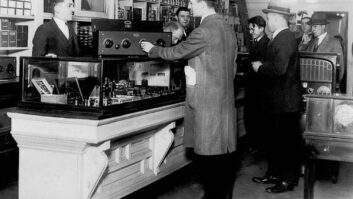The author is owner and general manager of WYAB 103.9 FM in Flora, Miss., and co-author with MMTC of the MB 18-184 “FM Class C4” proposal.

It’s been done before. What’s old is new again. History has a way of repeating itself.
All of these clichés, and surely others, apply in the ongoing battle between the National Association of Broadcasters and a quite large, yet mostly obscure bunch of small station licensees all over the nation pushing for the creation of a new station allocation, the proposed FM Class C4 12,000 Watt license type.
The Federal Communications Commission has wrapped up taking formal comments and reply comments in the MB 18-184 proceeding, which if approved, would allow for the creation of a new FM Class C4 allotment option, as well as make certain changes to Section 73.215 of the commission’s rules. Full implementation of the proposal would enable hundreds of FM Class A stations all across Zone II of the country to double in power.
The demand for such changes is certainly evident. Over 100 small broadcasters filed formal letters in favor in the proceeding, and even iHeartMedia and Educational Media Foundation, the parent organization behind the massive “K-Love” broadcast network, did not oppose the creation of a FM Class C4 license type. Leading low-power FM advocacy group REC Networks did not outright dismiss the idea either, and nearly every single comment submitted in the window either partially or fully embraced the proposal … with one notable exception.
The National Association of Broadcasters, the self-proclaimed “Voice for America’s Radio Broadcasters,” is apparently not too keen on the idea.
COMPETITIVE THREAT?
The same organization that is currently advocating for the outright abolition of all ownership limitations in media markets with fewer than (about) 850,000 people seemingly feels as if licensees of the smallest commercial FM power class are somehow too great a competitive threat to the core of their organization: the mega-broadcasters. [See “NAB Sets Out Reasoning for Its Opposition to Class C4,” Sept. 12 issue.]
It is a tale plainly reminiscent of David versus Goliath, and one that has played out many times in the past before the commission. A ragtag coalition of small and independent broadcasters commented largely in favor of the MB 18-184 plan, but the highly-influential, well-funded lobbying arm of the gigantic groups came down hard against the idea.
Fortunately for David, however, small station operators prevailed in a nearly identical scenario played out at the FCC 20 years ago. In its 1998 Biennial Regulatory Review, MM Docket Number 98-93, the commission faced a similar dilemma with respect to allocation of previously unused bandwidth and how to best free up warehoused spectrum. The solution was the formation of a procedure to allow small station licensees to induce (or “trigger”) large broadcasters who had not built out their stations fully to reclassify those facilities to a then-new and more appropriate “FM Class C0” allotment type.
In its arguments against the FM Class C0 station allocation in the Docket 98-93 proceeding, the NAB concluded that “over-the-air broadcast services are facing increasing competition (from wired and satellite)” and “oppose[d] the creation of a new Class C0 FM station class.”
FAMILIAR ARGUMENT
Now, 20 years later, in its 2018 MB 18-184 filing against the FM Class C4 plan, the same organization writes that “protecting FM signal quality has never been more important, given the increasingly competitive audio marketplace” and that the commission “should be wary of [the] proposal.”
As was the case in 1998, the NAB is insinuating that any technical rule changes that could benefit small broadcasters are bad, because our “industry leaders” have somehow lost their collective competitive edge.
The NAB attempts to reinforce its position against the FM Class C4 and 73.215 changes by claiming that the “proposal could be especially problematic for FM translators.”
But beyond some simple statements of conjecture to that effect, no hard data, case study or evidence of any type is to be found to support that notion. Indeed, the NAB made similar statements about secondary services in the FM Class C0 proceeding, saying that the FCC “should not revise or redefine any of its rules so that a new low-power FM service blueprint is created,” as if MM Docket 98-93’s full implementation would have hindered LPFM development.
In reality, the FM Class C0 allotment type has been here for almost two decades, and there are more licensed FM translators and LPFM stations than ever.
What’s old is truly new again. Small broadcasters generally supported the FM Class C0 proceeding 20 years ago, and the National Association of Broadcasters came out in fierce opposition then. Similarly, without the NAB’s blessing in 2018, creation of the FM Class C4 allotment type received overwhelming and near-universal support, with far more positive comments filed in this window than during the 1998 FM Class C0 proceeding.
Hopefully, history will repeat itself once again and the commission will do the right thing to help small and independent broadcasters everywhere.
Comment on this or any article to [email protected] with “Letter to the Editor” in the subject field.












